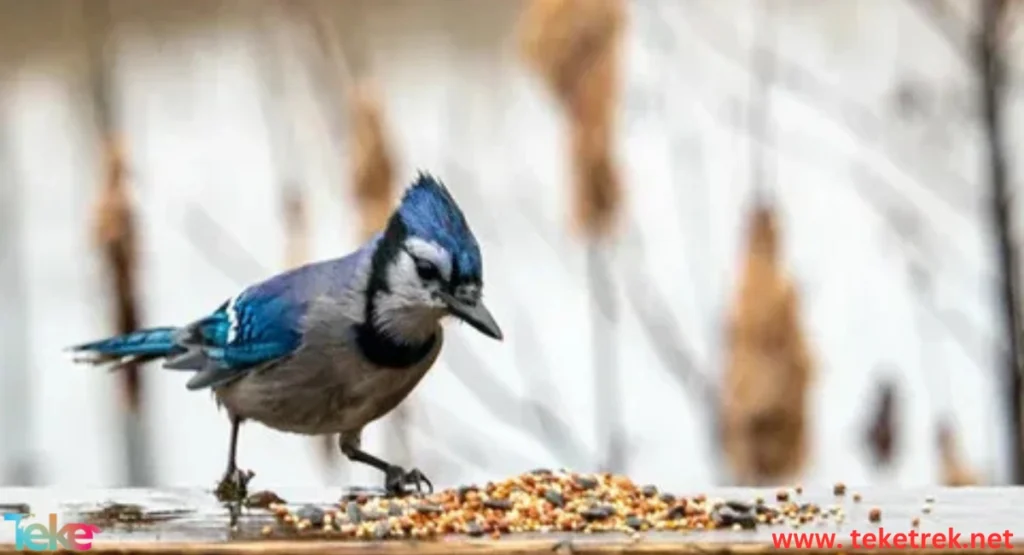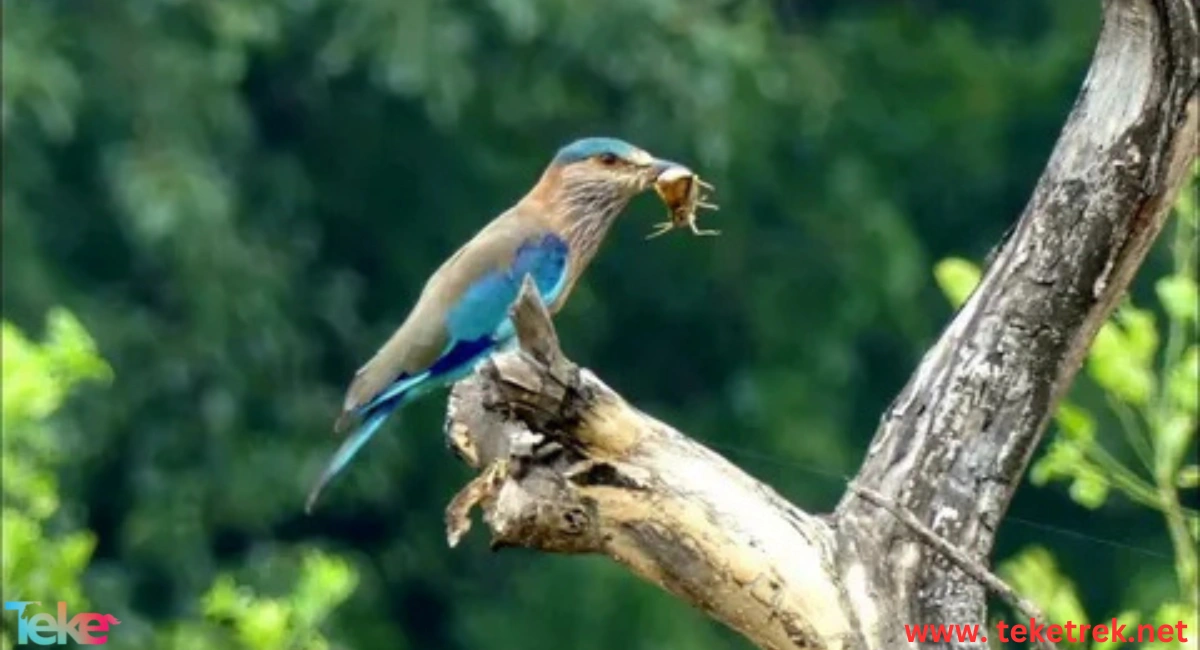God, the Almighty, created birds with different species and types, each having unique shapes and sizes. Some birds are capable of flying, while others, like penguins and ostriches, cannot fly. Most birds feed on grains, while some feed on meat, such as eagles, falcons, and crows. Birds are found all over the world and are able to adapt to various environments. Some can swim. The largest bird is the ostrich, while the smallest is the hummingbird. Each bird has a completely different way of life.
Birds vary in the growth of their wings and intelligence levels. Some birds are highly intelligent, like crows and parrots. These are social birds that enjoy singing and playing. Most birds are known for their beautiful sounds and pleasant singing, and they communicate with each other through signals and songs. Some birds can even cooperate with each other in hunting. Here’s a comprehensive report from teketrek، with all the information about birds.
Types of Birds and Their Names
There are various types of birds, each with a unique way of living, feeding, and interacting with its environment. Below are some of the main types of birds:
- Raptors (Birds of Prey): These birds are carnivores that feed on other animals. They have strong beaks and sharp talons, such as eagles and falcons.
- Seed-eating Birds: These birds primarily feed on seeds, such as pigeons and sparrows.
- Insect-eating Birds: These birds have flat and wide beaks that help them extract insects from crevices, like the swallow.
- Nectar-feeding Birds: These birds live in forests and green meadows, such as woodpeckers and hummingbirds.
- Migratory Birds: These birds travel to different environments in search of suitable weather conditions.
- Songbirds: These birds belong to the order Passeriformes and produce beautiful songs through an organ in their body called the syrinx. Some species have sweet songs, while others produce loud sounds.

Popular Songbirds:
- The Wren: Known for its cheerful singing, it lives in forests, marshes, and islands, feeding on insects and spiders.
- The Cardinal: Famous for its sweet songs and large red beak, it lives in eastern North America and Mexico.
- The Tanager: Known for its bright and beautiful colors, it feeds on fruits and insects and is famous for its long songs, especially in spring, living in tropical forests.
- The Nightingale: Known for its joyful singing, especially at night, it lives in forests and shrubs.
- The Shrike: Famous for its long, beautiful notes, it lives in gardens, agricultural fields, and habitats, feeding on meadows and fields.
How to Care for Pet Birds
Caring for pet birds is not difficult but requires some attention. You need to provide a suitable and sturdy cage with all the necessary amenities for the bird, such as a place for food and water. Make sure to provide appropriate nutrition based on the bird’s species, like seeds and pellets, and maintain cleanliness in the cage for the bird’s health. Regular visits to the vet will help prevent diseases.
Birds of Prey: The Strongest Hunters in the Sky
Birds of prey are among the strongest birds, characterized by their powerful beaks and sharp talons that help them catch their prey. They are carnivores like eagles and falcons. These birds are large and have long wings, allowing them to soar for extended periods. They can hunt while flying in the sky.
Read: Types of Cages for Pet Birds
Migratory Birds: How Do They Find Their Way?
Migratory birds travel to different locations in search of favorable weather conditions. They migrate annually from cold environments to warmer regions for breeding during the summer and to find food during winter. Some birds migrate short distances, like the waxwing, while others, like the hummingbird, travel long distances from the United States or Canada to South America.
The Strangest Bird Behaviors in Nature
Birds often exhibit fascinating and unusual behaviors that leave us in awe. These behaviors demonstrate their intelligence, adaptability, and sometimes, their ability to interact with humans in unexpected ways. Here are more examples of bizarre bird behaviors:
- Gift-giving: As mentioned, crows and magpies are known to offer gifts to humans who treat them kindly. They may give items like shiny objects, buttons, or small trinkets. This behavior is believed to be a sign of their recognition and appreciation.
- Tool Use: Some birds, like the New Caledonian crow, have been observed using tools to achieve specific goals, such as using sticks to extract insects from tree bark or even crafting tools from leaves. This demonstrates a high level of problem-solving and intelligence.
- Mimicry: Certain birds, like the lyrebird, can imitate almost any sound they hear, including chainsaws, car alarms, camera shutters, and even human speech. This mimicry is often used to attract mates or ward off rivals.
- Synchronized Flight: Flocks of birds, such as starlings, perform intricate aerial maneuvers together in perfect synchronization, creating mesmerizing patterns in the sky. This behavior, known as murmuration, is not only a form of communication but also a defense mechanism to confuse predators.
- Self-Decoration: Some birds, like bowerbirds, decorate their nests with colorful objects, including pieces of plastic, flowers, and even glass. This is done to attract mates, as the more vibrant and unique the nest, the more likely the bird is to attract a partner.
- Birds of Paradise: Male birds of paradise are known for their elaborate and colorful displays, where they perform intricate dances and show off their vibrant plumage to impress females. These displays are so extreme that they can include flipping, spinning, and even hanging upside down.
- Altruistic Behavior: Some birds, such as the African gray parrot, have been observed displaying empathy by helping other birds in distress. For example, they have been seen rescuing injured flock members by providing food or support.
- Deceptive Nesting: Some birds, like the parasitic cowbird, lay their eggs in the nests of other species, tricking them into raising their young. The unsuspecting host birds often raise the cowbird chicks, often at the expense of their own offspring.
- Playfulness: Certain species, including ravens and crows, engage in play behaviors that are similar to those of mammals. They have been observed sliding down snowy hills, playing with sticks, and even playing games with other animals like wolves.
These behaviors highlight the remarkable diversity in bird behavior and their adaptability to different environments. Each new discovery about bird behavior adds to the mystery and fascination of these intelligent creatures.
Raising Rabbits at Home: The Ultimate Guide to a Rewarding and Joyful Experience
Endangered and Rare Birds
Many bird species are endangered due to overhunting and industrialization. Some of these endangered birds include:
- The Bald Ibis: This bird is endangered due to human encroachment on its habitat.
- The Kākāw: This bird is an easy prey due to its inability to fly well, making it vulnerable to extinction.
- The Green Parakeet: Endangered due to overhunting by hunters and farmers.
- The Forest Owl: Extremely endangered due to hunting and displacement from its natural habitat.
- The Philippine Eagle: Its population has significantly decreased due to continuous hunting.
How Birds Build Their Nests
Birds differ in how they build their nests. Some birds build nests using stones, moss, spider webs, bark, and clay. Some species build nests with intricate, geometric patterns. For instance, pigeons place sticks on top of each other in a disordered manner to form a nest and then lay two eggs. Swallows build their nests under rocks, caves, or tree roots, attaching the mud nest to walls or ceilings. Nightingales prefer to build their nests in crevices in trees or flower pots, using leaves, feathers, or hair.
Difference Between Wild Birds and Pet Birds
There are clear differences between wild and pet birds. Wild birds are found all over the world and are hard to tame, such as the blue jay and the sparrow. On the other hand, pet birds can be raised and cared for at home, such as the zebra finch, a calm bird that does not make much noise, and the cockatiel, which has a beautiful appearance and sweet sound. The budgerigar is one of the most popular pet birds used for decoration, known for its sweet songs.

The Importance of Birds in Ecological Balance
Birds play a crucial role in the food chain, and they are vital to ecological balance. They help pollinate plants and spread seeds, which aids in the growth of forests and gardens. Birds also contribute significantly to pest control as they feed on insects and rats, preventing their overgrowth and helping maintain the health and balance of ecosystems.
In conclusion, birds are beautiful creatures created by God for the benefit of humans. They are essential members of the food chain and help maintain ecological balance by eating harmful insects and pests in agricultural lands. Additionally, they contribute to seed dispersion and forest growth. There are many species of birds, including seed-eaters, carnivores, migratory birds, and songbirds. Each bird has a unique lifestyle, and some can be kept as pets for ornamental purposes or even for producing eggs or meat. Indeed, the world of birds is fascinating and full of wonder.





